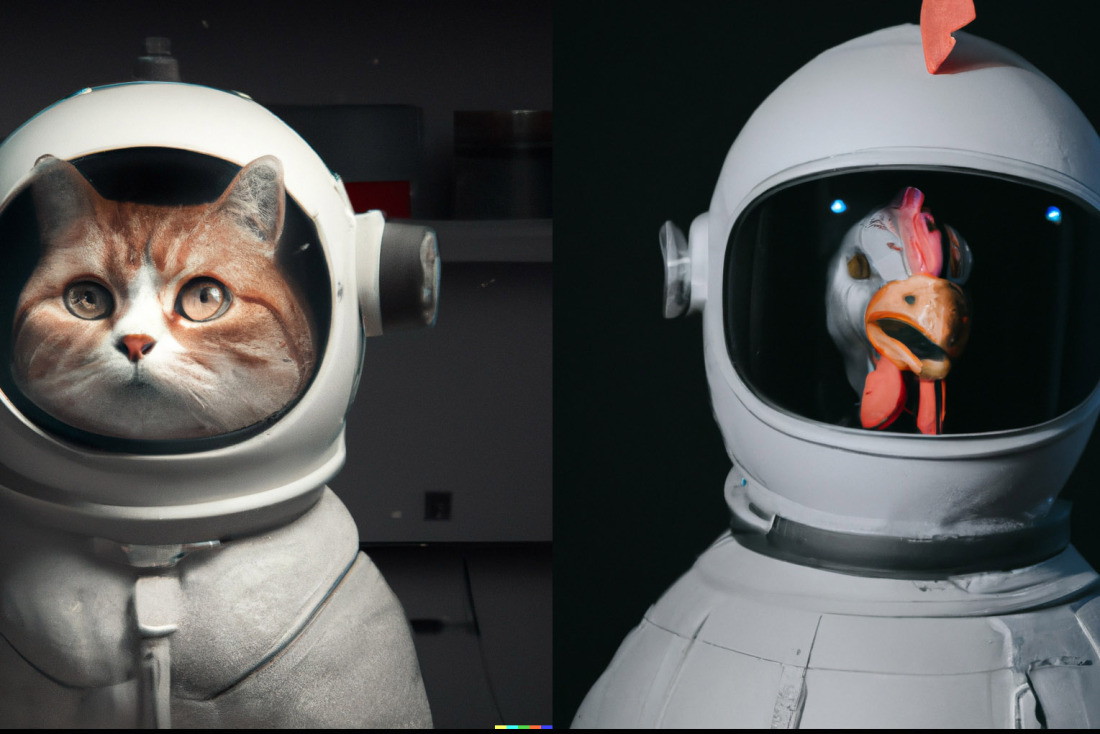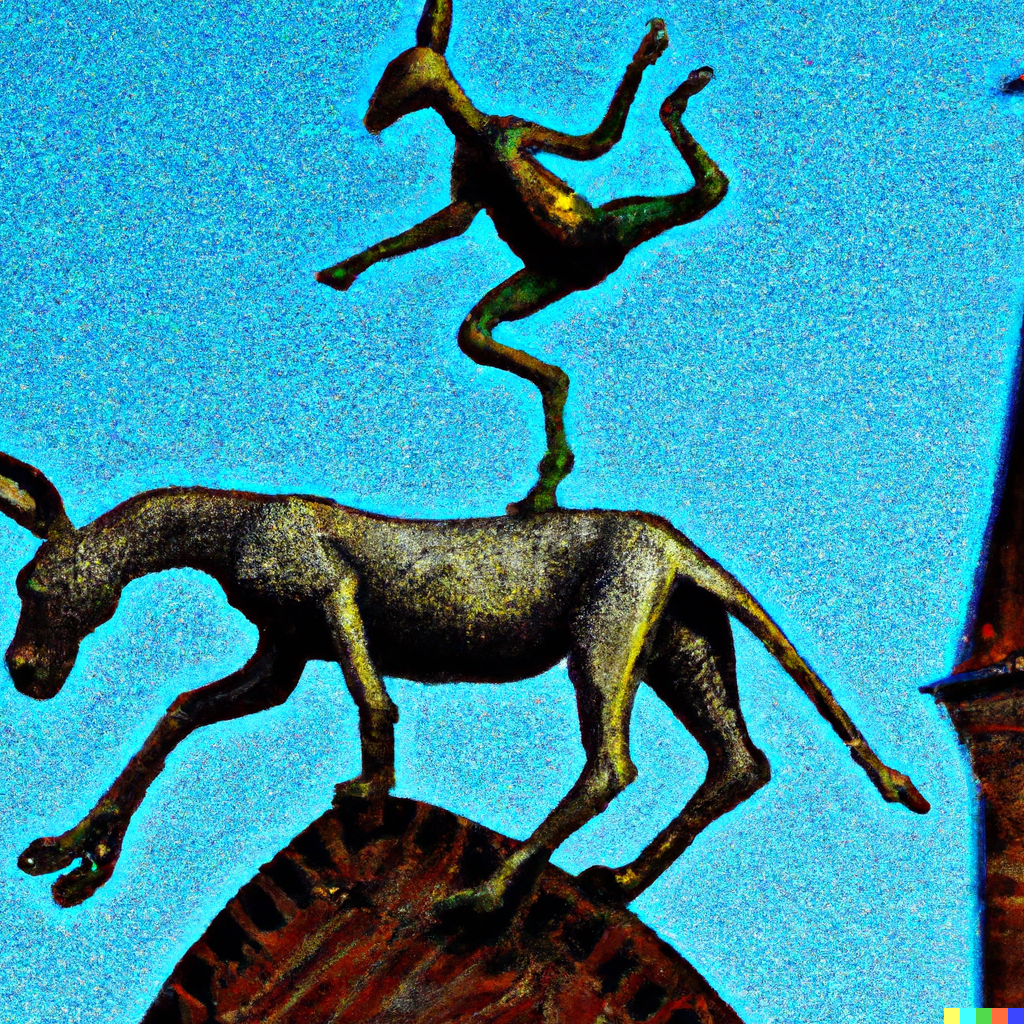Picture gallery: This is what Bremen looks like to artificial intelligence systems
DigitizationNew possibilities for AI

Artificial intelligence (AI) systems are becoming ever more sophisticated and easier to use. So we decided this was a good reason to ask an AI: what does Bremen look like to you?
Artificial intelligence is making rapid progress. Although it's already part of life in some areas such as in virtual assistants like Alexa or Siri, it's still in its infancy in other sectors.
In recent years, AI systems that are capable of creating images and graphics (text-to-image AI systems) have come to wider public attention. A user types a sentence and the AI system creates an image from it, completely independently.
The most well-known AI systems in this field are DALL-E, Stable Diffusion and Midjourney. In particular, Midjourney created a stir amongst the media in September 2022, when an artist won an art competition with an image generated by AI, raising all kinds of questions about what can actually be considered as art.
How does AI see Bremen?
We ran our test using DALL-E. This AI system can be operated using a straightforward web interface – no programming knowledge required. However, the test revealed that getting it to generate a usable image isn't quite so easy. The text you enter should be as precise as possible and leave very little room for interpretation. It should not contain too many image contents. Even so, different AI systems will produce very different results. The images created by Midjourney are especially impressive. You can try out this AI system for yourself.
Six examples of AI images for subjects taken from Bremen:
Example 1: Picture of a cat, a dog, a cockerel and a donkey in space suits

The starting point was the four motifs of Bremen's Town Musicians linked to one of Bremen's core industries: aerospace and aviation. When it came to the donkey, the AI system only showed the ears.
As AI systems are trained using the millions, if not billions, of freely accessible images from the Internet, the images they create are based on those that are available online. The more accurately real places, buildings or people have to be represented, the harder it is for the AI to create images from them.
Example 2: Painting of the Town Musicians of Bremen in the style of Salvador Dalí

One of an AI system's most remarkable skills is its ability to apply the painting style of well-known artists, epochs or drawing styles to new content. However, whether it can faithfully reproduce the style of the original creator is another question entirely.
Example 3: Still life painting of a bottle of Beck’s beer

The following text illustrates the AI system's reaction when it is overwhelmed by too many details. Although, at first glance, the scene looks like a photograph, a closer examination reveals some rather odd details and geometric discrepancies, such as those seen on the bicycle on the right of the picture:
Example 4: People enjoying a sunny day on the Weser, painted in the style of Georges Seurat

AI seems to have an Achilles heel when it comes to bicycles, which is a shame because Bremen is one of Germany's major cycling cities.
Example 5: High-quality photograph of a bicycle, painted in the colours of Bremen's city flag (red and white)

In the final motif, we took our inspiration from one of Bremen's most important economic sectors, the food and beverages industry. The Federal State of Bremen is one of the world's major producers of fish fingers, so the critical issue was to ask the AI system where fish fingers actually come from:
Example 6: A fish that has fish fingers instead of fins

Are image-creating AI systems more than just a gimmick?
As interesting and amusing as the results from DALL-E might be, they do beg the question as to whether the images are also useful, or whether the results are still too far away from any practical application.
Sirko Straube, Research and Administrative Manager at DFKI, the German Research Centre for Artificial Intelligence, in Bremen and host of the Think Reactor-AI Podcasts, thinks they have great potential:
"These types of AI application fire our imaginations and show possible ways in which AI can be used in areas in which we've previously thought of as being the sole preserve of human beings. In an impressive manner, it shows that we can train AI systems to decipher texts and use the information to create visual representations. By using these methods right now, even in ways that might appear rather frivolous, we will open up new areas of use in future and maybe also have an effect on the professional sphere. It is extremely important to understand that the AI system used here is creating something for which it has been trained. The results are therefore a transformation of what the algorithm has derived from the data. The AI system doesn't understand the text and isn't aware of the context of its output. However, for us, as human beings, it is still valuable because we can suddenly visualise the texts in a comprehensive way and also be inspired by the AI system's results. We can even argue about whether or not it should be considered as art."
Bremen is renowned as a hotspot for the development of artificial intelligence in Europe – although more for robotic AI than for the AI systems that create pictures. In recent years, a real eco-system of institutes, businesses and an increasing number of start-ups has developed here, many of which are driving technology forward in a multitude of areas.
Success Stories
For the last 18 years, the German Research Center for Artificial Intelligence (Deutsches Forschungszentrum für Künstliche Intelligenz) in Bremen has been at the forefront of research into artificial intelligence, robotics and cyber-physical systems. The researchers are developing innovative solutions that will help human beings, whether on land, sea, in the air or in space.
Learn moreAI at any cost or proportionate regulation? Silicon Valley is divided on the subject, as shown not least by the conflict surrounding OpenAI's CEO Sam Altman in the past few weeks. By visiting Silicon Valley as a delegation, we are personally going to find out how things are exactly.
Learn moreWhat does the collapse of Silicon Valley Bank mean for tech start-ups in San Francisco? Our USA expert, Tim Ole Jöhnk, investigates. Also in our Spring letter: Chat GPT is conquering the world – but is it a sustainable business model?
Learn more
